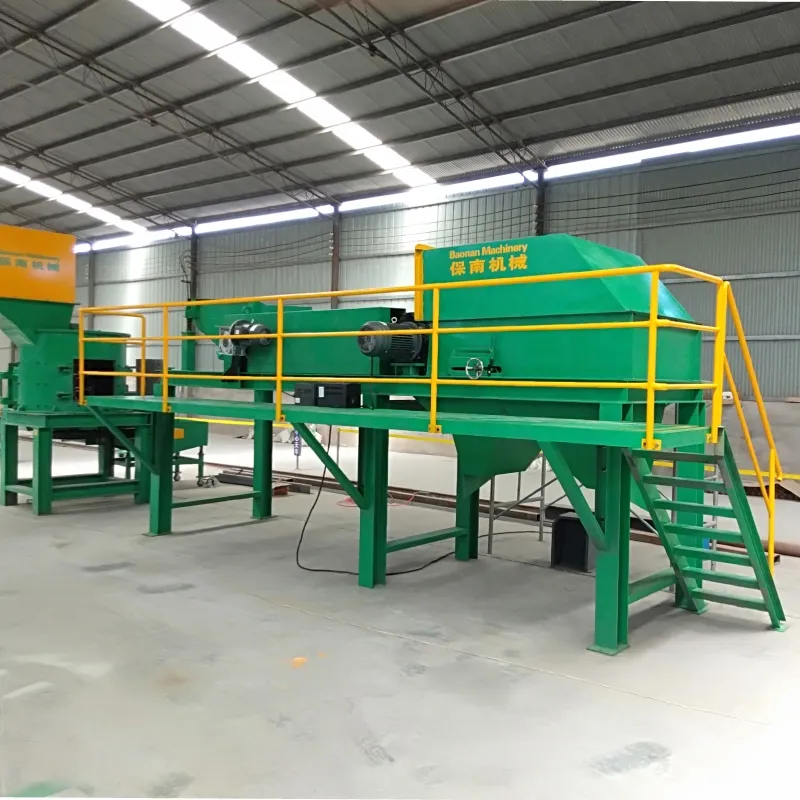

Aza . 06, 2024 16:28 Back to list
Solid Waste Recycling Plants A Sustainable Solution for Waste Management
The increasing amount of solid waste generated by urbanization and industrialization has become a significant environmental challenge. Solid waste recycling plants have emerged as a crucial component in managing this problem, promoting sustainability, and reducing the ecological footprint of human activities. By effectively sorting, processing, and repurposing materials, these plants not only alleviate the burden on landfills but also contribute to the circular economy.
Understanding Solid Waste
Solid waste encompasses a wide range of materials, including household garbage, industrial byproducts, construction debris, and agricultural waste. As society becomes more consumer-oriented, the volume of waste produced is escalating rapidly. According to the World Bank, global solid waste is expected to increase by 70% by 2050, reaching 3.4 billion tons per year. This scenario underscores the urgent need for efficient waste management solutions, particularly recycling.
The Role of Recycling Plants
Solid waste recycling plants are designed to process various types of recyclable materials, such as paper, plastics, metals, and organic waste. The recycling process typically involves several stages, including collection, sorting, processing, and distribution.
1. Collection Waste is collected from households, businesses, and industrial facilities. Municipalities often provide separate bins for different types of waste to facilitate recycling.
2. Sorting Upon arrival at the recycling facility, waste is sorted using manual labor and advanced technologies like conveyor belts and optical sensors. The goal is to separate recyclable materials from non-recyclables and contaminants, ensuring the purity of the recycled products.
3. Processing Once sorted, materials undergo various processing methods. For example, plastics may be shredded and melted to create pellets, while metals can be melted down for reuse. Paper is pulped and de-inked, allowing it to be transformed into new paper products.

4. Distribution The final step involves distributing processed materials back into the market. Recycled materials are sold to manufacturers who use them to create new products, thus closing the recycling loop.
Environmental and Economic Benefits
The operations of solid waste recycling plants provide numerous environmental benefits. By diverting waste from landfills, these plants reduce greenhouse gas emissions and conserve natural resources. For instance, recycling metals saves significant amounts of energy compared to mining and processing new raw materials. Additionally, recycling paper reduces deforestation, while glass recycling minimizes the extraction of raw materials.
Economically, recycling plants create job opportunities in various sectors, from collection and sorting to processing and sales. The recycling industry has proven to be a robust economic sector, supporting local communities and contributing to sustainable economic growth. According to the Recycling Partnership, recycling and reuse activities contribute over $236 billion to the U.S. economy and support more than 1.1 million jobs.
Challenges Faced by Recycling Plants
Despite their benefits, solid waste recycling plants face several challenges. Fluctuating market prices for recyclable materials can make it difficult for facilities to maintain profitability. Additionally, contamination of recyclable materials remains a significant issue, often leading to increased processing costs and lower quality recycled products.
Moreover, public awareness and participation in recycling programs are crucial for success. There is often a gap between the available recycling infrastructure and the community's willingness or ability to utilize it effectively. Education and outreach campaigns are vital to informing citizens about proper recycling practices and the importance of waste reduction.
Conclusion
Solid waste recycling plants play a pivotal role in addressing the escalating waste crisis while promoting environmental sustainability and economic development. By investing in and supporting these facilities, communities can become more resilient, reducing their reliance on landfills and minimizing their environmental impact. As awareness and technology continue to evolve, the future of solid waste recycling holds great promise in contributing to a cleaner, more sustainable world. Through collective efforts, we can foster a culture of recycling and resourcefulness that benefits both the planet and future generations.
Latest news
Troubleshooting Common Eddy Separator Problems
NewsJul.04,2025
The Role of Metal Recycling Plants in Circular Economy
NewsJul.04,2025
The Impact of Recycling Line Pickers on Waste Management Costs
NewsJul.04,2025
Safety Features Every Metal Shredder Should Have
NewsJul.04,2025
How Industrial Shredders Improve Waste Management Systems
NewsJul.04,2025
How Cable Granulators Contribute to Sustainable Recycling
NewsJul.04,2025